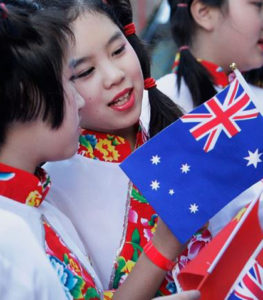Australia’s diversity hit by COVID pandemic
The reduced numbers of migrants and international students entering Australia as a result of the COVID-19 pandemic could have a lasting effect on the nation’s diverse cultural makeup, according to experts.
The pandemic has meant a sudden halt to the flow of new arrivals to Australia and it is not clear when Australia’s borders will reopen to people from other countries.
 According to the Australian Bureau of Statistics only 350 international students arrived in Australia from April to August this year. This compares to the more than 200,000 arrivals for the same period last year.
According to the Australian Bureau of Statistics only 350 international students arrived in Australia from April to August this year. This compares to the more than 200,000 arrivals for the same period last year.
Experts say that Australia’s multiculturalism brought by migrants and international students is valued by many Australians, but that COVID-19 could alter the country’s cultural makeup for a long time to come.
Head of Social Science at the University of WA and cultural geographer Professor Amanda Davies says the decline in new arrivals could have lasting impacts.
“We’re likely to continue to attract skilled migrants to Australia, however the international student population and that migration may be disrupted, and it’s unclear if that will be able to be recovered,” Prof Davies said.
“It’s because other places offer very similar sorts of experiences and some other countries such as Canada are opening up their borders to international students,” she said.
Foreign students are a significant source of revenue for Australian universities and have value to the broader community, Professor Davies says.
“International students are a very important part to maintaining a very diverse cultural mix, they bring in lots of fresh ideas, but within the university life on campus, international students are essential,” she said.
Professor Davies said a loss in international student populations could also mean the country’s workforce might take a hit.
“Australia is in an unusual position where it has long been reliant on international migration for sustaining its employment and labour force,” she said.
“Those who stay on and find employment after their tertiary studies are an important component and if that component is not there, we would need to find that skill base and skillset somewhere,” Professor Davies said.
She said falling numbers of overseas students has also had a big impact on businesses and that there was a need for policies to both entice new students and keep those that have chosen to stay.
Recent Census data shows Australia is growing ever more diverse, while also showing another rise in the representation of cultures from Asia among Australia’s population.
It shows two thirds (67 per cent) of the Australian population were born in Australia. And of the 6,163,667 overseas-born persons, nearly one in five (18 per cent) had arrived since the start of 2012.
While England and New Zealand were still the next most common countries of birth after Australia, the proportion of those born overseas who were born in China and India has increased since 2011 from 6.0 per cent to 8.3 per cent, and 5.6 per cent to 7.4 per cent respectively.
The Philippines has swapped places with Italy in the top 10 list, moving from number eight to number six.
Malaysia now appears in the top 10 countries of birth (replacing Scotland) and represents 0.6 per cent of the Australian population.












